The figure below shows a simplified version of a kidney dialysis machine.
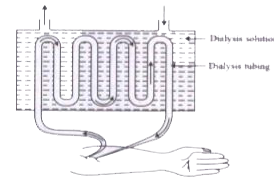
Explain why red blood cells remain inside the dialysis tubing.
They are too large to pass through the partially permeable membrane of the tubing.
Topper's Solved these Questions
- BOOK - CENGAGE BIOLOGYCHAPTER - EXCRETION IN PLANTS AND ANIMALSEXERCISE - CONSOLIDATED EXERCISE (MCQ)44videos
EXCRETION IN PLANTS AND ANIMALS
- BOOK - CENGAGE BIOLOGYCHAPTER - EXCRETION IN PLANTS AND ANIMALSEXERCISE - OLYMPIAD AND NTSE LEVEL EXERCISES10videos
EXCRETION IN PLANTS AND ANIMALS
- BOOK - CENGAGE BIOLOGYCHAPTER - EXCRETION IN PLANTS AND ANIMALSEXERCISE - MANDATORY EXERCISE18videos
EXCRETION IN PLANTS AND ANIMALS
- BOOK - CENGAGE BIOLOGYCHAPTER - EVOLUTIONEXERCISE - CHALLENGING EXERCISE5videos
EVOLUTION
- BOOK - CENGAGE BIOLOGYCHAPTER - MENDELIAN INHERITANCEEXERCISE - CHALLENGING EXERCISE12videos
MENDELIAN INHERITANCE
Similar Questions
Given below is the representation of amino acid composition of the relevant translated portion of β-chain of haemoglobin, related to the shape of human red blood cells.
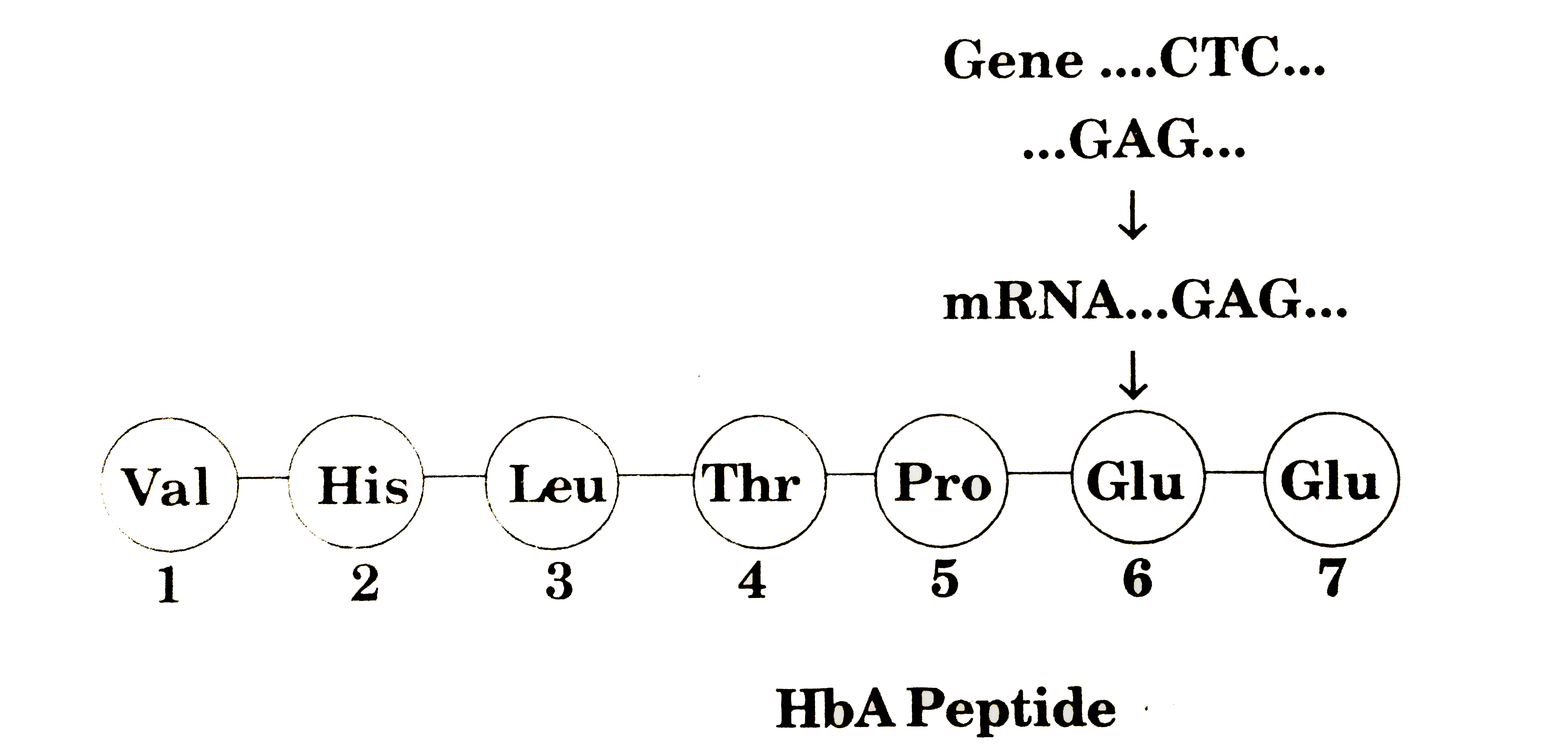
(a) Is this representation indicating a normal human or a sufferer from certain related genetic disease? Give reason in support of your answer.
(b) What difference would be noticed in the phenotype of the normal and the sufferer related to this gene?
(c) Who are likely to suffer more from the defect related to the gene represented the males, the females or both males and females equally? And why?View SolutionGiven below is a statement followed by two conclusions numbered I and II. Assume everything in the statement to be true, and then decide which of the given conclusions logically follow (s) , beyond a reasonable doubt, from the information given in the statement. Statement: The colour of blood is red due to the presence of red blood cells. Conclusion I: If red blood cells are removed, blood will lose its red colour. Conclusion II: Red blood cells will be red as long as they remain in the blood.
View Solution
Knowledge Check
- Question 1 - Select One
Each question contains STATEMENT-I(Assertion) and STATEMENT-2(Reason).the statement carefully and mark the correct answer accoring to the instrution given below:
STATEMENT - 1 : If red blood cells wrer removed from the body and placed in pure water, pressure inside the cell increases.
STATEMENT - 2 : The concentration of the salt content in the cells increases.AIf both the statements are TURE and STATEMENT-2 is the correct explanation STATEMENT-1BIf both the statements are TURE but STATEMENT-2 is NOT the correct explanation STATEMENT-1CIf STATEMENT-1 is TURE and STATEMENT-2 is FALSEDIf STATEMENT-1 is FA,SE and STATEMENT-2 is TRUE - Question 2 - Select One
All living cells require energy for various activities. This energy is available by the breakdown of simple carbohydrates either using oxygen or without using oxygen.
The graph below represents the blood lactic acid concentration of an athlete during a race of 400 m and shows a peak at point D.
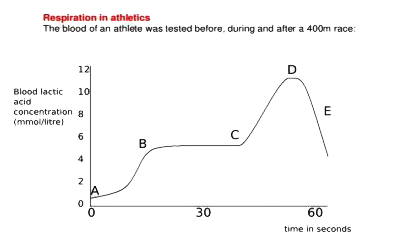
Lactic acid production has occurred in the athlete while running in the 400 m race. Which of the following processes explains this event?AAerobic respirationBAnaerobic respirationCFermentationDBreathing - Question 3 - Select One
Read the source given below and answer the questions that follows: In 1848, Frederic Sorrieu, a French artist, prepared a series of four prints visualising his dream of a world made up of 'democratic and social Republics', as he called them. The first print of the series, shows the peoples of Europe and America - men and women of all ages and social classes - marching in a long train, and offering homage to the statue of Liberty as they pass by it. As you would recall, artists of the time of the French Revolution personified Liberty as a female figure - here you can recognise the torch of Enlightenment she bears in one hand and the Charter of the Rights of Man in the other. On the earth in the foreground of the image lie the shattered remains of the symbols of absolutist institutions. In Sorrieu's utopian vision, the peoples of the world are grouped as distinct nations, identified through their flags and national costume. Leading the procession, way past the statue of Liberty, are the United States and Switzerland, which by this time were already nation-states. France, identifiable by the revolutionary tricolour, has just reached the statue. She is followed by the peoples of Germany, bearing the black, red and gold flag. Interestingly, at the time when Sorrieu created this image, the German peoples did not yet exist as a united nation - the flag they carry is an expression of liberal hopes in 1848 to unify the numerous German-speaking principalities into a nation-state under a democratic constitution. Following the German peoples are the peoples of Austria, the Kingdom of the Two Sicilies, Lombardy, Poland, England, Ireland, Hungary and Russia. From the heavens above, Christ, saints and angel's gaze upon the scene. They have been used by the artist to symbolise fraternity among the nations of the world.
Which people were portrayed in Sorrieu's first print?Apeople of England and FranceBpeople of Europe and AmericaCpeople of Europe onlyDpeople of France only
The plant cell has different organ which perform various functions. In addition to the cell membrane, plant cells also have another layer around them called the cell wall. This rigid layer is not present in animal cells. It is made up of a non-living material called cellulose. Check the below figure and try to answer the following questions
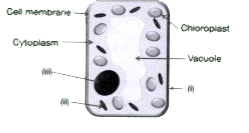
Plant cell is surrounded by outer layer called cell wall. Explain why cell wall is this important ?View SolutionThe graph shows the oxygen dissociation curves of haemoglobin from two species of mammals, s and T .
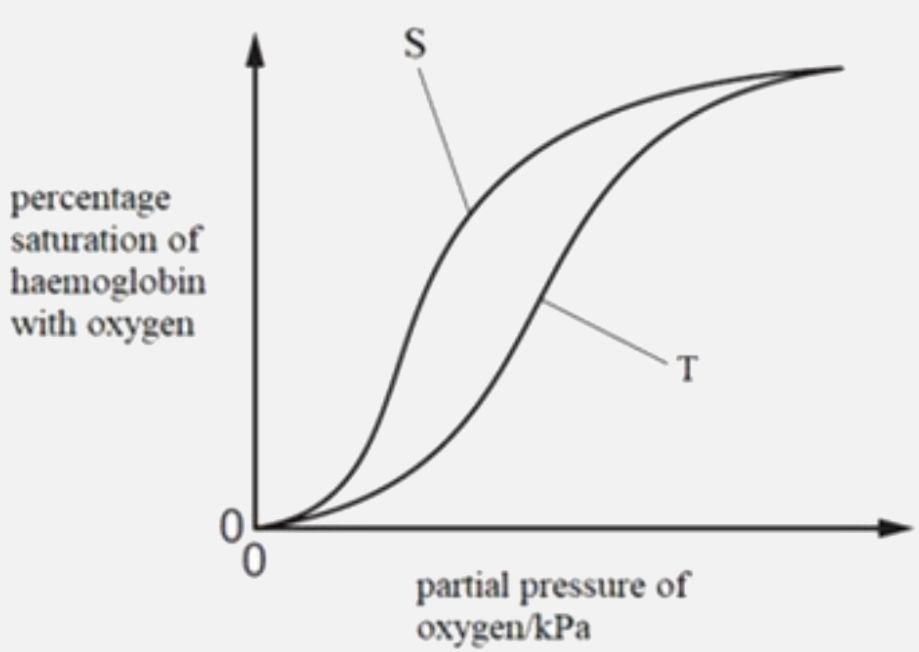
Which statements could explain the difference in the oxygen dissociation curves of species S and species T ?
I. Species T has higher haemoglobin concentration in its red blood cells than species S.
II. The haemoglobin in species T has a lower affinity for oxygen than the haemoglobin in species S.
III. Species T may be living at a higher altitudes than species S.View SolutionGiven below is the representation of a relevant part of amino acid composition of the β-chain of haemoglobin, related to the shape of human red blood cells.

(a) Is this representation of the sequence of amino acids indicating a normal human or a sufferer from a certain blood related genetic disease ? Give reason in support of your answer.
(b) Why is the disease referred to as a Mendelian disorder ? Explain.View SolutionRead the source given below and answer the questions that follows: In 1848, Frederic Sorrieu, a French artist, prepared a series of four prints visualising his dream of a world made up of 'democratic and social Republics', as he called them. The first print of the series, shows the peoples of Europe and America - men and women of all ages and social classes - marching in a long train, and offering homage to the statue of Liberty as they pass by it. As you would recall, artists of the time of the French Revolution personified Liberty as a female figure - here you can recognise the torch of Enlightenment she bears in one hand and the Charter of the Rights of Man in the other. On the earth in the foreground of the image lie the shattered remains of the symbols of absolutist institutions. In Sorrieu's utopian vision, the peoples of the world are grouped as distinct nations, identified through their flags and national costume. Leading the procession, way past the statue of Liberty, are the United States and Switzerland, which by this time were already nation-states. France, identifiable by the revolutionary tricolour, has just reached the statue. She is followed by the peoples of Germany, bearing the black, red and gold flag. Interestingly, at the time when Sorrieu created this image, the German peoples did not yet exist as a united nation - the flag they carry is an expression of liberal hopes in 1848 to unify the numerous German-speaking principalities into a nation-state under a democratic constitution. Following the German peoples are the peoples of Austria, the Kingdom of the Two Sicilies, Lombardy, Poland, England, Ireland, Hungary and Russia. From the heavens above, Christ, saints and angel's gaze upon the scene. They have been used by the artist to symbolise fraternity among the nations of the world.
Which country was yet not recognised as a nation state when this image was created?View SolutionRead the source given below and answer the questions that follows: In 1848, Frederic Sorrieu, a French artist, prepared a series of four prints visualising his dream of a world made up of 'democratic and social Republics', as he called them. The first print of the series, shows the peoples of Europe and America - men and women of all ages and social classes - marching in a long train, and offering homage to the statue of Liberty as they pass by it. As you would recall, artists of the time of the French Revolution personified Liberty as a female figure - here you can recognise the torch of Enlightenment she bears in one hand and the Charter of the Rights of Man in the other. On the earth in the foreground of the image lie the shattered remains of the symbols of absolutist institutions. In Sorrieu's utopian vision, the peoples of the world are grouped as distinct nations, identified through their flags and national costume. Leading the procession, way past the statue of Liberty, are the United States and Switzerland, which by this time were already nation-states. France, identifiable by the revolutionary tricolour, has just reached the statue. She is followed by the peoples of Germany, bearing the black, red and gold flag. Interestingly, at the time when Sorrieu created this image, the German peoples did not yet exist as a united nation - the flag they carry is an expression of liberal hopes in 1848 to unify the numerous German-speaking principalities into a nation-state under a democratic constitution. Following the German peoples are the peoples of Austria, the Kingdom of the Two Sicilies, Lombardy, Poland, England, Ireland, Hungary and Russia. From the heavens above, Christ, saints and angel's gaze upon the scene. They have been used by the artist to symbolise fraternity among the nations of the world.
What is identified by the different flags and costumes worn by the people?View Solution
